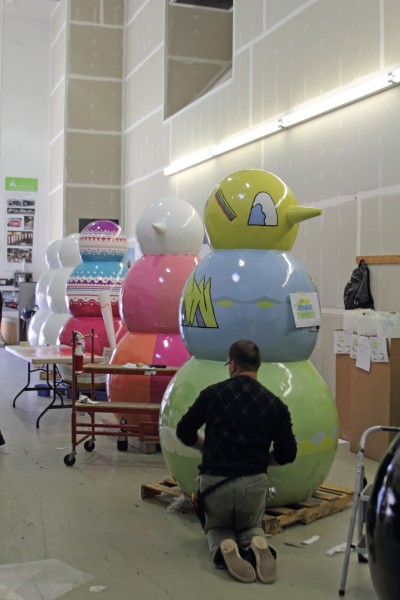
After digital printing, lamination and computer cutting, the graphics were trimmed and applied by hand to the snowmen’s fibreglass bodies.
“Several sets of test panels were cut and installed on the snowmen and then adjustments were made as required,” says Bishop. “The artists’ files were then cropped and manipulated to fit into these sections. Even with all of this preparation, the complexity of the images required many of the files to be produced and installed in multiple layers.”
Overall, the job took Ampco 317.6 hours with 16 technicians, including setting up the files, printing, laminating, computer-cutting, hand-trimming and applying the graphics to the snowmen’s bodies. The graphics were printed with both solvent-based and ultraviolet-curable (UV-curable) inks onto white self-adhesive vinyl.
“This was a unique print-and-install project,” says Minori Ide, marketing specialist for Ampco, who compares the base graphic panel shapes to strips of orange peel. “We had to specify the curvature of the snowman body with consideration for the substrate’s characteristics.”
In addition to the base artwork, the additional layers of files were used for graphic features like eyes.
Hitting the streets
The snowmen were installed throughout Toronto in November. They were accompanied by signposts explaining the charitable aspects of the campaign and encouraging passersby to snap photos of themselves with the snowmen.
Most of the snowmen were scheduled for removal and storage in early January, but a few at key attractions were expected to remain on display through to Family Day (February 20).
With files from Ampco Grafix and Smak. For more information, visit www.ampcografix.com and www.smak.ca.





